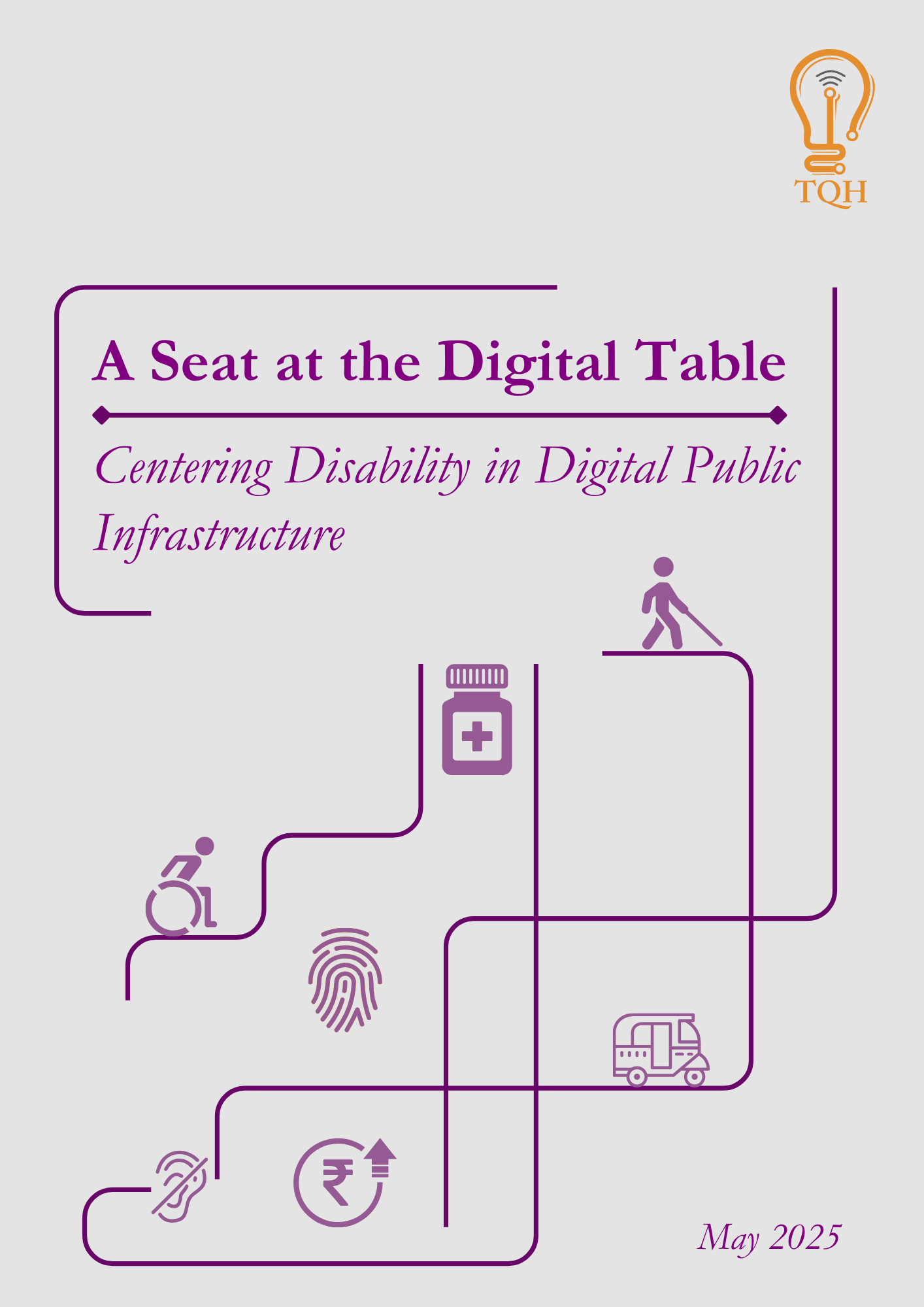Published: May 2025
 This paper examines the intersection of disability and digital public infrastructure (DPI). Why disability? Persons with disabilities stand to benefit the most from the inclusive potential of DPI technologies. They stand to suffer the most when these technologies are designed without taking their needs into account. They stand to offer the most to economies and societies when new technologies enable their full participation. Nevertheless, to date, disability has largely remained at the periphery of the DPI conversation.
This paper examines the intersection of disability and digital public infrastructure (DPI). Why disability? Persons with disabilities stand to benefit the most from the inclusive potential of DPI technologies. They stand to suffer the most when these technologies are designed without taking their needs into account. They stand to offer the most to economies and societies when new technologies enable their full participation. Nevertheless, to date, disability has largely remained at the periphery of the DPI conversation.
Three case studies from India—Aadhaar (identity), UPI (payments), and ONDC (e-commerce)—shed light on the reality of DPI and disability, as well as the possibility of building a more fully inclusive “Purple Stack.” Each of these case studies highlights different aspects of disability inclusion, reflected through different roles of government, civil society, and the private sector. Lessons include:
- Speed and scale alone do not guarantee inclusion—accessibility must be an intentional design choice from the outset.
- Processes are as important as products—user journeys, not just discrete technologies, determine real-world accessibility.
- Governance has a critical role to play—just as security and privacy are embedded into DPI governance, accessibility must be codified through policies and standards.
- Accessibility must exist at every level of the DPI stack—from frontend applications to backend protocols.
To translate these lessons into action, the community of DPI architects and advocates should take steps to build an open-source repository of DPI accessibility solutions. An additional recommendation is to develop a structured research agenda to assess the impact of DPI on persons with disabilities—including by filling in data gaps and mapping user journeys.
Disability is a complex and evolving concept. After defining key terms such as “accessibility” and “universal design,” this paper puts forward a working definition of a Purple Stack: a suite of digital public technologies that (a) embody the philosophy of universal design such that (b) the technologies themselves are accessible in ways that lead to (c) inclusive outcomes for persons with disabilities in key social, economic, and political domains.
Though a Purple Stack benefits persons with disabilities, disability inclusion is not the only reason to build one. Disability-inclusive DPI technologies are good for growth and will benefit everyone, eventually. Moreover, a Purple Stack is a powerful argument in favor of the DPI approach to decentralization and modularity.
